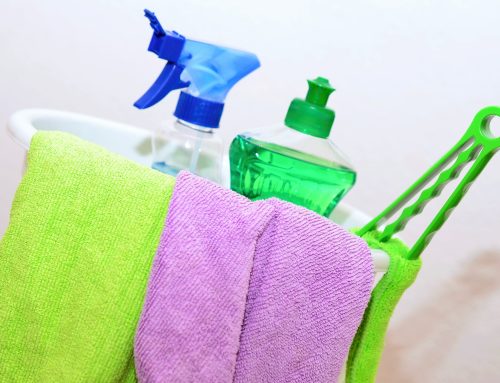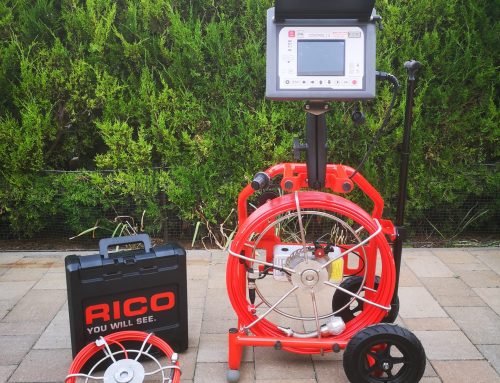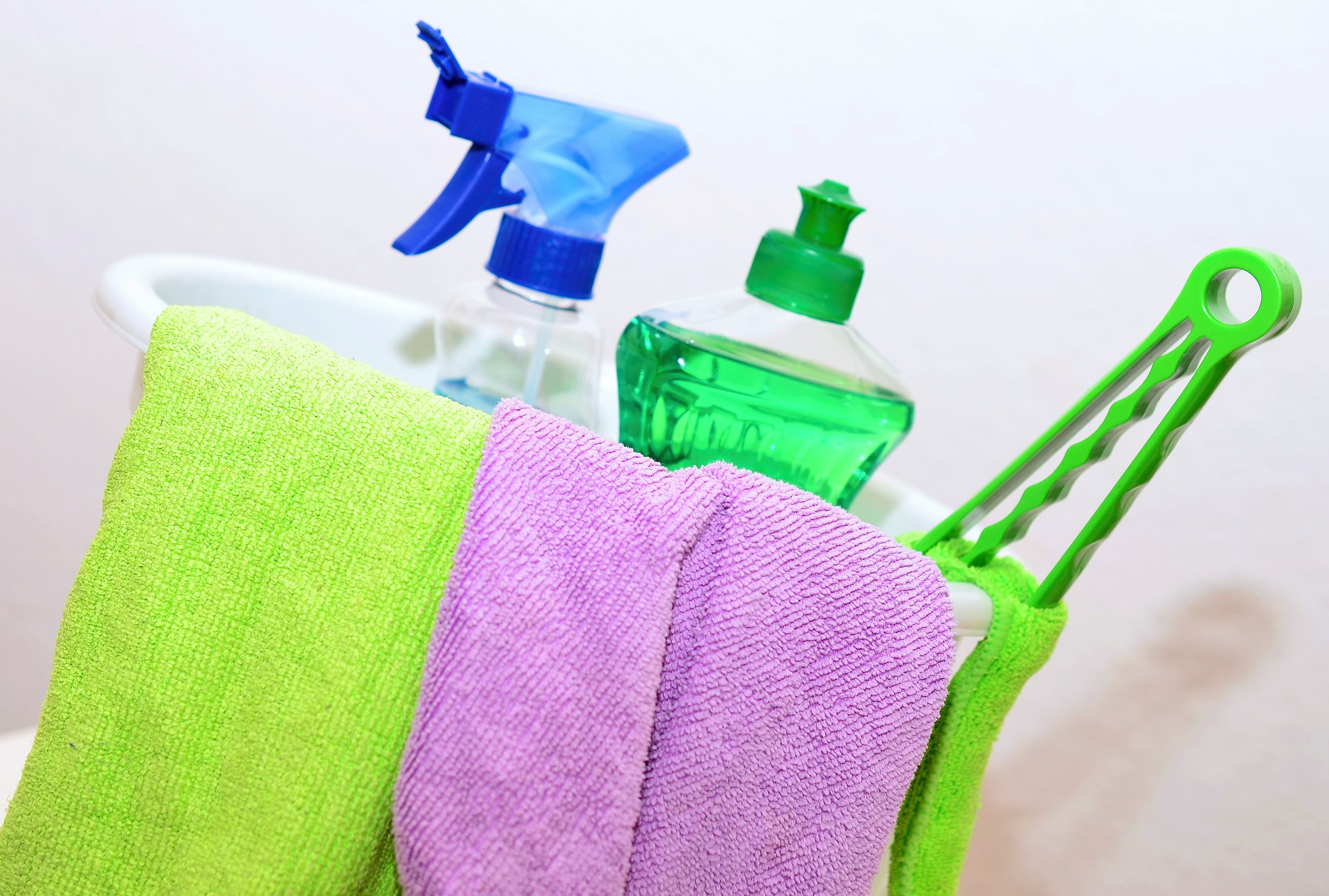Dangerous Plant – Why should we pay special attention to restroom cleaning?

There is no doubt that one of the most troublesome parts of our home is the restroom! Those who have experienced a clogged toilet with sewage overflow know exactly: the toilet is a dangerous plant that can cause serious problems in our home if not properly maintained. However, we may have problems with the toilet not only when clearing the blockage…
Risky flushes
It's probably no news to anyone that we need to take special care to keep the restroom clean. Not only because a neglected toilet looks alarming, but also because the toilet can be a source of serious infections! In this regard, we should not neglect the hygiene of the toilet seat, as germs can settle in all parts of the restroom when using the toilet.
The bacteria and viruses found in human feces are first released into the air during each flush, and then transferred to all the objects used in the toilet (e.g. seat, toilet seat, etc.). We should pay particular attention to the bacteria found on the toilet seat, which cannot be considered spotlessly clean, especially since we usually touch it before washing our hands. If we do not pay attention to the hygiene of the entire restroom during cleaning, we expose ourselves and those living in the same household to the risk of infection carried by numerous bacteria and viruses. Children and the elderly may be especially at risk, as they typically have weaker immune systems than adults. They can get sick from pathogens that cause minor infections, but they can also more easily catch more serious infections from the toilet area (e.g. Calici, Hepatitis C virus, etc.), which can even cause permanent damage to their bodies!
Invisible enemies
It is estimated that the average household produces about 50 liters of yellow water and 500 liters of black water per year due to toilet use, which we will flush with about twice as much drinking water. This water contains about 99 percent of the bacteria in all domestic wastewater, and the ratio is similar in terms of nitrogen and phosphorus content. It is no coincidence that the water used for flushing toilets is the only one of the domestic wastewaters that cannot be used in any form afterwards! Yellow and black water can contain viruses, fungi, and bacteria.
In the restroom, we are primarily exposed to various viral infections. Although these pathogens are invisible to the naked eye, their primitive structure is combined with extraordinary resistance. Viruses, which are smaller than a hundred-thousandth of a millimeter in size, show quite a lot of diversity.
In the case of some microorganisms, such as Calici or the influenza virus, we have to reckon with increased virulence. We can easily transfer infectious pathogens that have settled on various objects in the restroom with our hands to other furnishings in our home (e.g. doorknobs, keyboards), which will sooner or later enter our bodies. Other pathogens, such as herpes viruses, can survive outside the body for a while, meaning they can infect us even hours after they have been on the toilet seat or doorknob. This can sometimes happen without the sight of any larger dirt or contamination in the restroom. Viruses, known as the smallest microorganisms, therefore become enemies that can enter our bodies in a sneaky way.
Insidious infections
The area that is most at risk of infection is the part of the body that comes into direct contact with the toilet seat, i.e. the thighs and buttocks. We are particularly at risk of using an unhygienic toilet if we have to sit on the toilet with a wound on our body, or if someone else has sat on the toilet before us. In this case, the wound is essentially a gateway for pathogens to enter our body.
It is also important to note that we can become infected much more easily through our genitals. Just think of various sexually transmitted diseases, some of which can be transmitted or caught even through an unkempt restroom. One such infection is genital herpes, which will almost always require years of medication. Once we have contracted the viral infection, which causes a burning, itching sensation, we have to deal with the symptoms recurring every three months. Various skin and urinary tract infections are also common, and occasionally blood poisoning can occur if we have had to use a severely infected toilet.
Let's fight against the spread of pathogens!
Of course, the chance of infection is much lower when using a home toilet. For the simple reason that the restroom in our apartment is used much less often than a public toilet, and we usually take much more care in keeping the home toilet clean. So let's consider it a basic rule that if possible, we should try to avoid using public toilets. But if we still have to do our business in such a place, we should take the most important precautions. For example, covering the seat with toilet paper and washing our hands carefully with hand sanitizer. This useful hygiene tool is available in basically any perfume shop, pharmacy, and sometimes in larger supermarkets. It will help prevent infections that can be acquired in the toilet (e.g. salmonella, typhoid) from entering our body. If such a product is not available, we can prevent various problems by washing our hands as carefully as possible.
Speaking of prevention, there is a lot we can do to prevent this when using the toilet. For example, we can lower the toilet lid every time we flush the toilet – not just the seat! – thus preventing the pathogens in the toilet bowl from getting outside the faience. If we can, it is worth building a small hand sink in the restroom, which can serve a dual purpose. On the one hand, such a hand sink offers increased personal hygiene, and on the other hand, we do not carry the bacteria on our hands to another room – which will typically mean the bathroom.
Of course, we should pay special attention to the hygiene of the entire restroom. Let's start cleaning where the greatest number of pathogens settle, that is, at the toilet bowl. Today, there are excellent products in stores that you can use to disinfect the toilet bowl several times a week, if possible, and don't forget to clean under the rim of the porcelain bowl. Don't forget that the longer you leave them on, the better the results!
To prevent infections, clean the entire restroom, including the toilet handle, seat, lid, cistern, toilet plunger, and the outside of the toilet bowl. Pay special attention to the toilet brush, which should also be stored in a bactericidal solution. Finally, don't forget to clean the tools used to clean the toilet, which can be soaked in a suitable disinfectant solution at least once a week to ensure proper hygiene.
All rights reserved, magyarendre.hu












